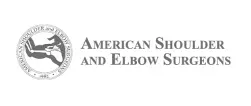Shoulder joint arthritis or severe shoulder fractures can significantly impact a person’s quality of life, causing pain and limited mobility. For individuals who have exhausted non-surgical treatments, shoulder replacement surgery may be recommended. There are two main types of shoulder replacement surgery: anatomic and reverse shoulder replacement. In this blog post, we will delve into the key differences between these two procedures and the criteria that surgeons consider when choosing one over the other.
Anatomic Shoulder Replacement:
An anatomic shoulder replacement, also known as a traditional shoulder replacement or total shoulder replacement, involves replacing the damaged joint surfaces of the shoulder joint with prosthetic components that mimic the natural anatomy of the shoulder joint. The prosthetic components consist of a metal ball that is placed on top of the upper arm bone (humerus) and a plastic socket that is inserted into the shoulder socket (glenoid). This allows the joint to move in a manner similar to a healthy, natural shoulder joint.
Reverse Shoulder Replacement:
In contrast, a reverse shoulder replacement involves reversing the placement of the prosthetic components. A metal ball is placed on the shoulder socket (glenoid) and a plastic socket is attached to the upper arm bone (humerus). This design alters the mechanics of the shoulder joint, allowing the deltoid muscle, which is the large muscle around the shoulder, to compensate for the loss of the rotator cuff muscles, which may be compromised due to injury or other conditions. This type of replacement is typically used when the rotator cuff is severely damaged or absent.
Criteria for Choosing Anatomic or Reverse Shoulder Replacement:
Surgeons consider several criteria when determining whether to perform an anatomic or reverse shoulder replacement:
- Rotator Cuff Function: The status of the rotator cuff is a crucial factor in determining the type of shoulder replacement. If the rotator cuff is healthy and functional, an anatomic shoulder replacement may be the preferred choice. However, if the rotator cuff is damaged or absent, a reverse shoulder replacement may be necessary to provide stability and function to the joint.
- Bone Quality: The quality of the bone in the shoulder joint also plays a role in the decision-making process. If the bone in the glenoid (shoulder socket) is severely worn down or weakened, a reverse shoulder replacement may be recommended as it does not rely on the glenoid for stability.
- Previous Surgery: Patients who have undergone previous shoulder surgeries, such as failed rotator cuff repairs, may have compromised rotator cuff function, which may necessitate a reverse shoulder replacement to restore shoulder function.
- Patient Age and Activity Level: The age and activity level of the patient are also considered. Reverse shoulder replacement may be preferred for older patients with low activity levels or those who may have difficulty complying with post-operative restrictions.
Conclusion:
In summary, anatomic and reverse shoulder replacements are two different surgical approaches used to address shoulder joint arthritis or severe shoulder fractures. Anatomic shoulder replacement is typically recommended for patients with a healthy rotator cuff and good bone quality, while reverse shoulder replacement may be considered for patients with compromised rotator cuff function, poor bone quality, or previous failed shoulder surgeries. The decision between anatomic and reverse shoulder replacement depends on several factors, including the status of the rotator cuff, bone quality, patient age, and activity level, and surgeon’s experience. It is crucial to consult with a qualified orthopedic surgeon to determine the most appropriate treatment option based on individual circumstances.
Want to dive deeper? Download the Shoulder Hemiarthroplasty with Nonprosthetic Glenoid Arthroplasty Run and Reame Procedure. With contributions by our own Dr. Moby Parsons.















